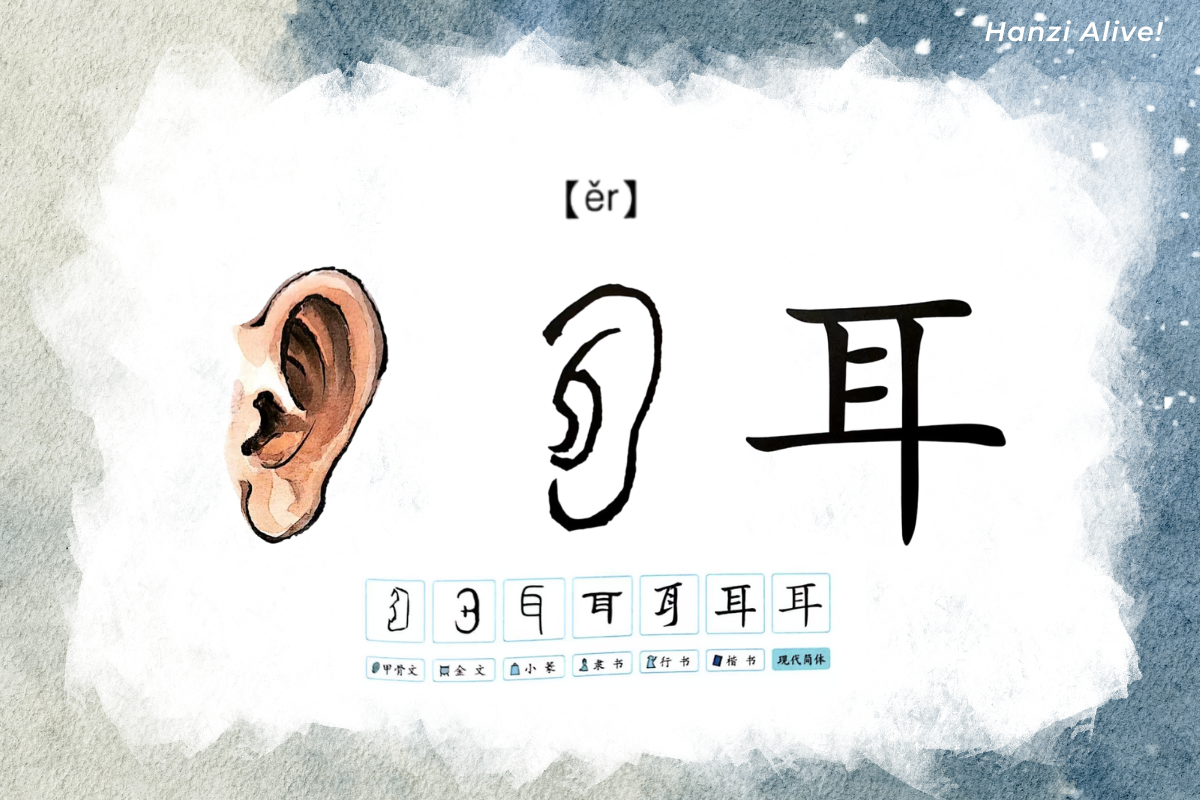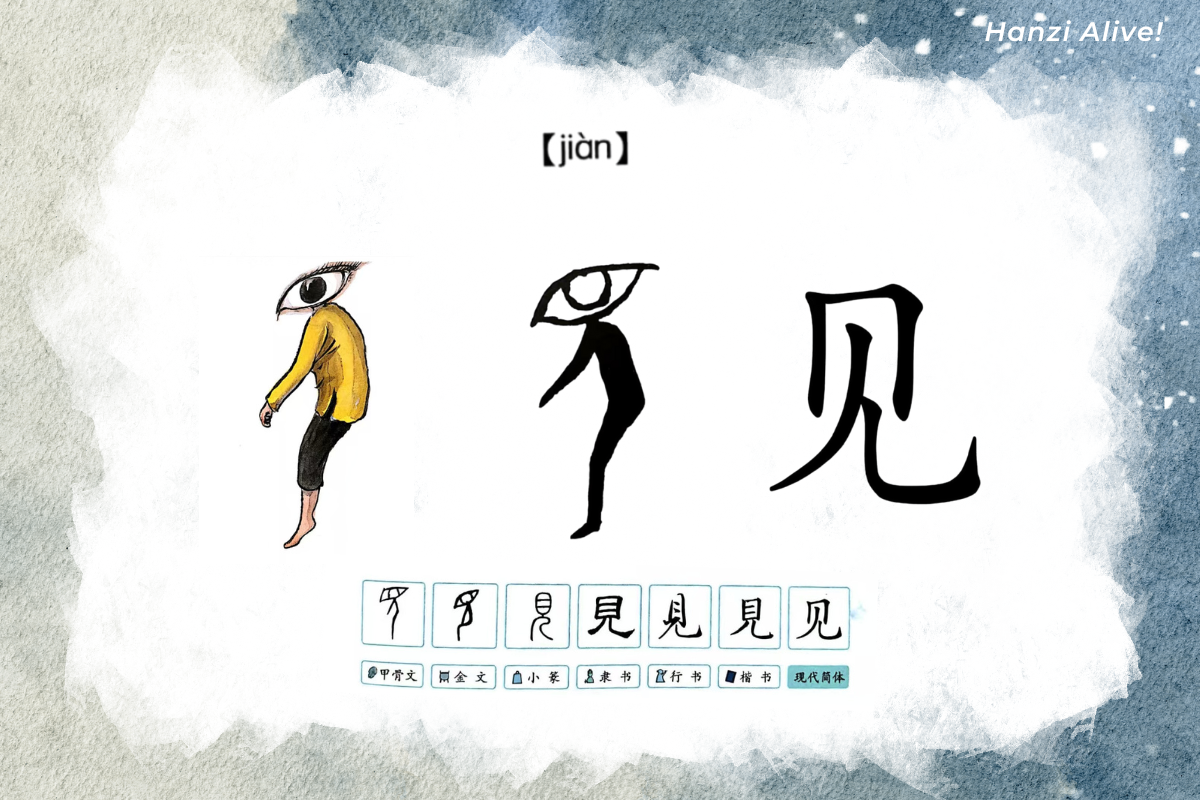Hanzi Alive!(13)
Chinese characters are an extension of the body - '耳' (ěr) is the receiver of sound, '目' (mù) is the window to the soul, '看' (kàn) is a far view with a hand over the eyes, '见' (jiàn) is the moment where gazes meet. These four characters teach you to perceive the world anew through Chinese characters.
耳(ěr)
Explanation:
- "耳" is shaped like an ear, representing the meaning of this character.
Example:
- The baby has small ears.
宝宝的耳朵很小。
bǎo bao de ěr duo hěn xiǎo. - She wears beautiful earrings.
她戴着漂亮的耳环。
tā dài zhe piào liang de ěr huán.
Find and circle "耳" in the image:
目(mù)
Explanation:
- The pictograph "目" looks like an eye, although it is turned sideways to combine with other characters.
Example:
- His eyes are very bright.
他的目光很明亮。
tā de mù guāng hěn míng liàng. - This item caught my attention.
这个东西很引人注目。
zhè ge dōng xi hěn yǐn rén zhù mù.
Find and circle "目" in the image:
看(kàn)
Explanation:
- The character "看" represents the act of raising a hand to shield the eyes from the bright sun, indicating "to see."
Example:
- Look at the blackboard, please.
请看黑板。
qǐng kàn hēi bǎn. - I like watching movies.
我喜欢看电影。
wǒ xǐ huān kàn diàn yǐng.
Find and circle "看" in the image:
见(jiàn)
Explanation:
- The character "见" features a body with a big eye on top, representing the action of seeing. However, "见" differs from "看" in that "看" signifies present tense seeing, while "见" indicates a past act of seeing.
Example:
- Have you seen my keys?
你看见我的钥匙了吗?
nǐ kàn jiàn wǒ de yào shi le ma? - We'll see each other tomorrow.
我们明天见。
wǒ men míng tiān jiàn.
Find and circle "见" in the image:

Now you understand: ears collect sound, eyes capture light and shadow, '看' is actively seeking, '见' is an unexpected encounter. The most magical aspect of Chinese characters - they allow the action of 'seeing' to be seen itself.






